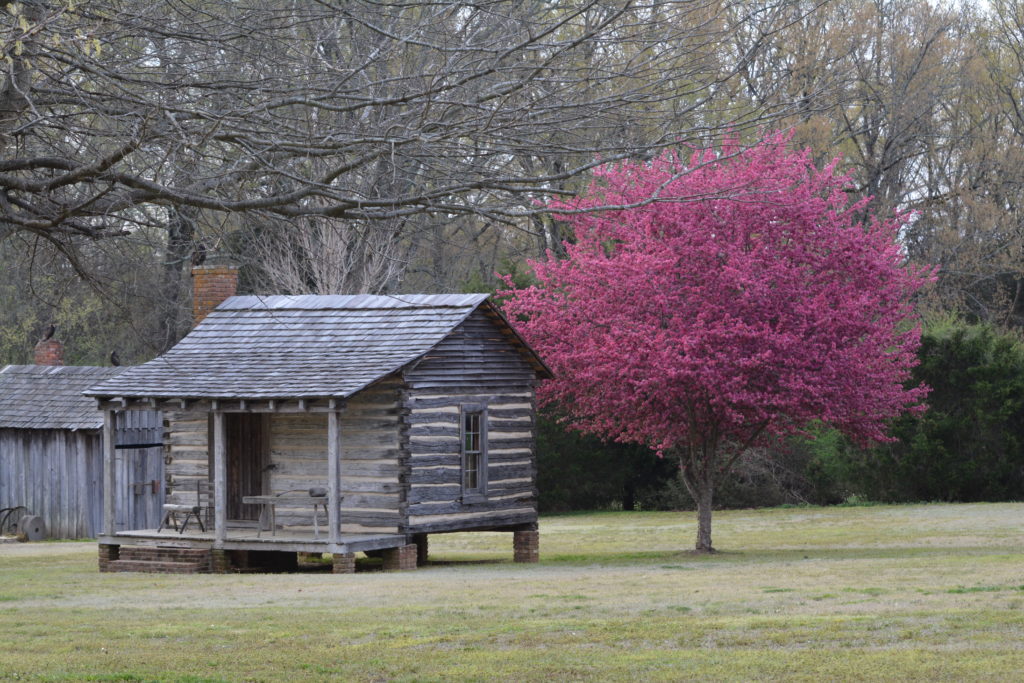A common fixture on the 19th century landscape, the family farmstead was at the heart of rural existence during that era. The smaller farms produced a wide assortment of staple crops to meet their day-to-day needs with cotton serving as the principal cash crop. The family farm of the antebellum period was characterized by its small acreage and subsistence lifestyle in contrast to the larger scale cotton plantations which dominated the landscape.
The Ames AgResearch and Education Center’s replica 19th century farmstead consists of a collection of log structures relocated from the Ames land base, as well as from the surrounding countryside. The assembly of buildings, including a dogtrot cabin, smoke house, corn crib, two enslaved African American cabins, and a blacksmith shop are arranged and furnished in a manner typical of the 1840’s/1850’s time period. The farmstead’s purpose is to preserve these examples of the region’s 19th century architecture while serving as an educational facility.
